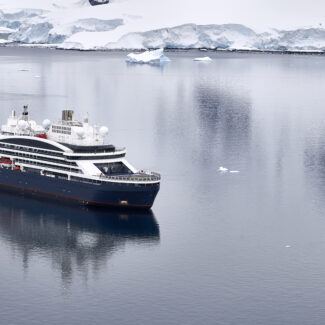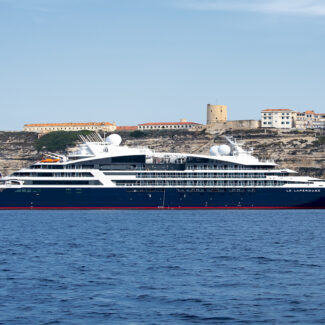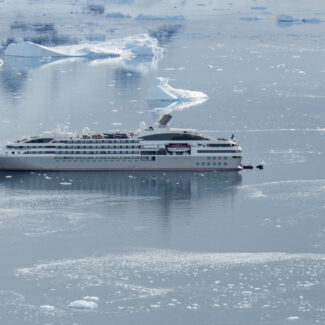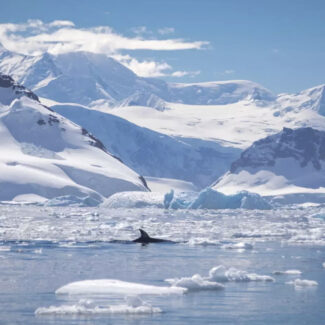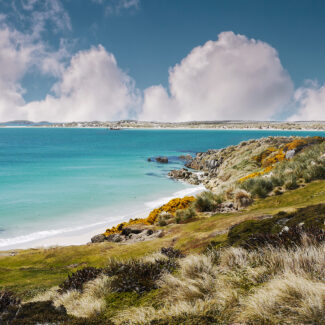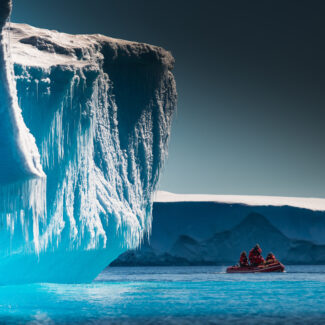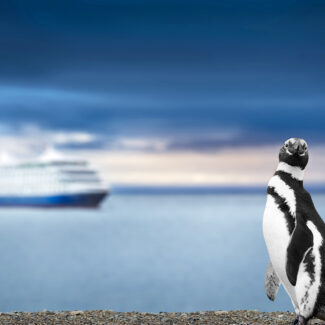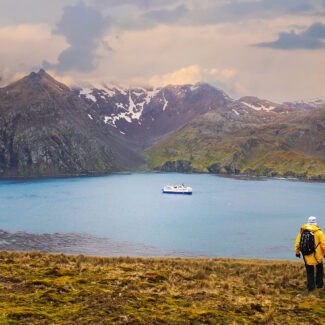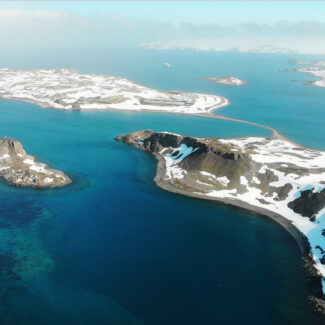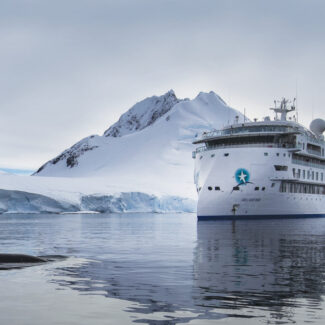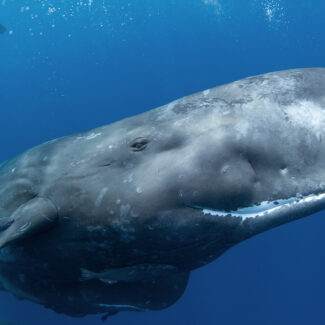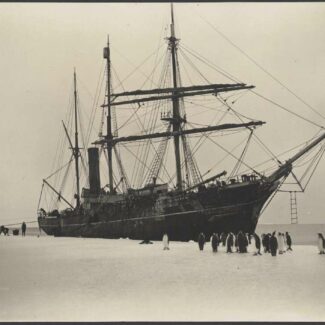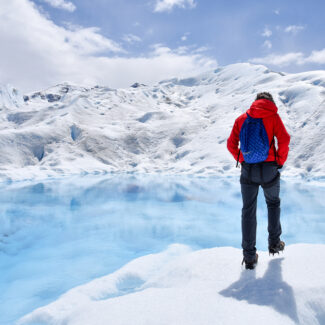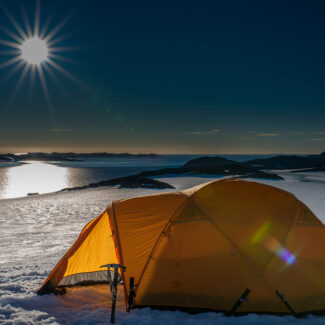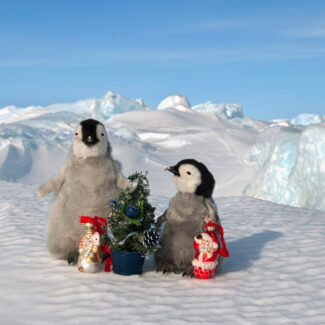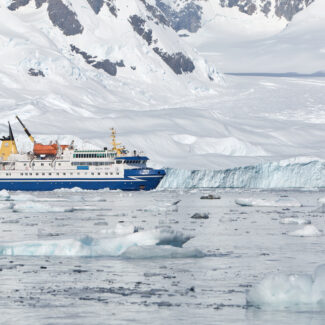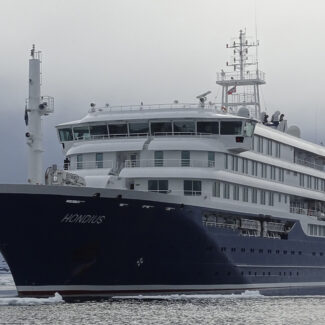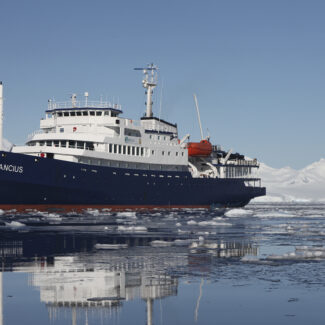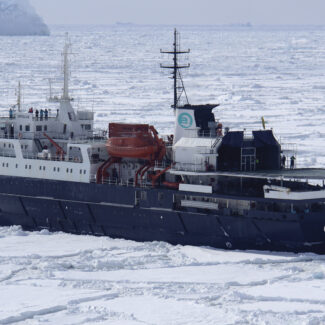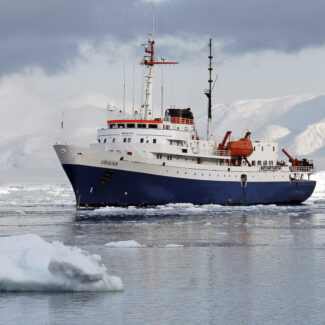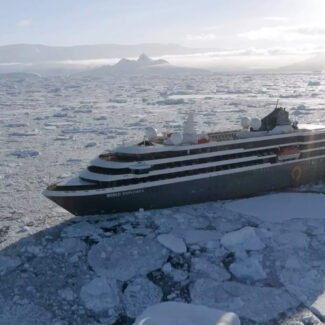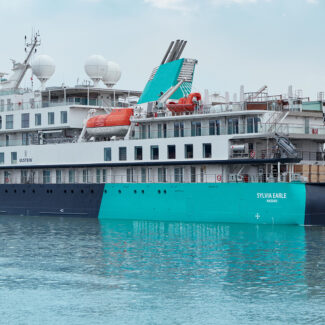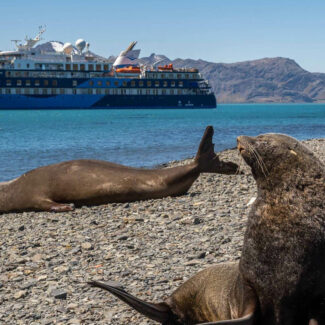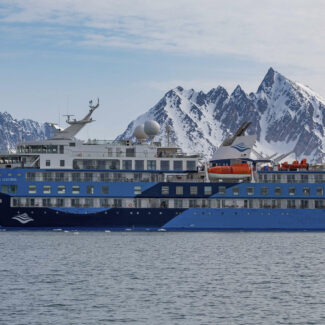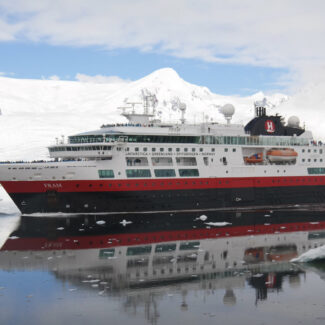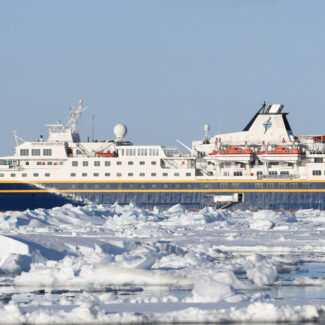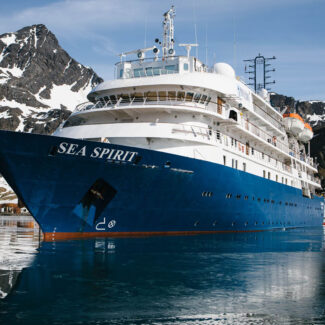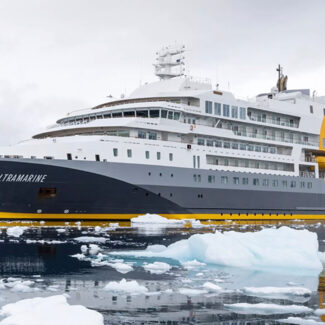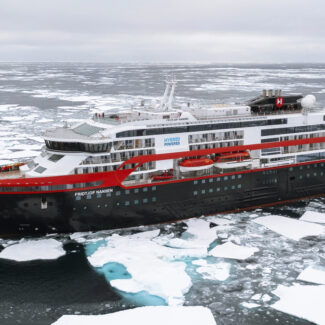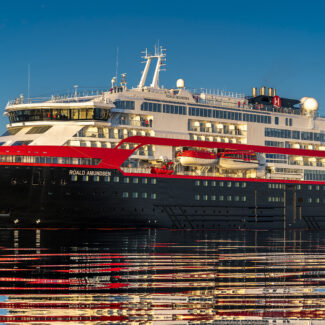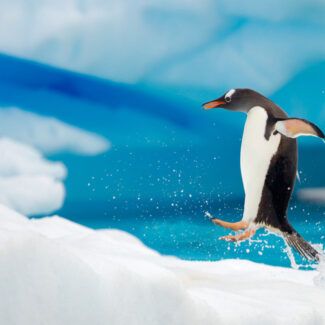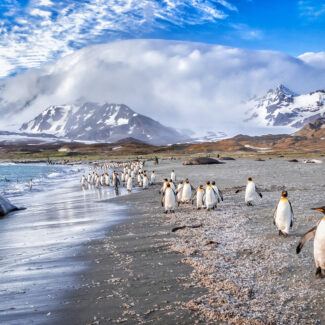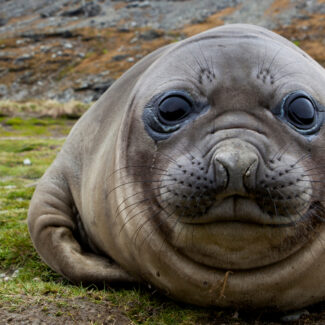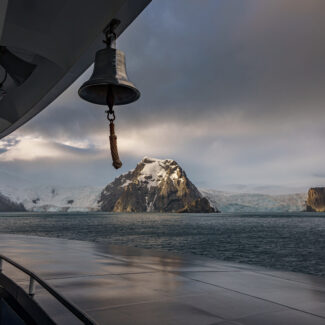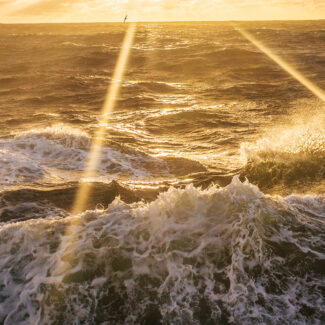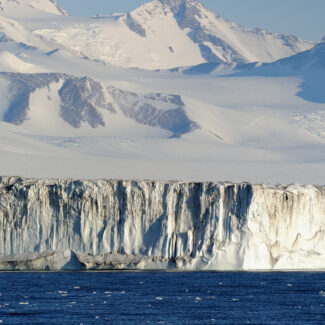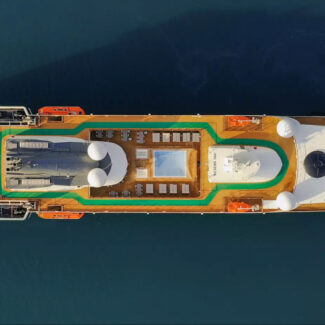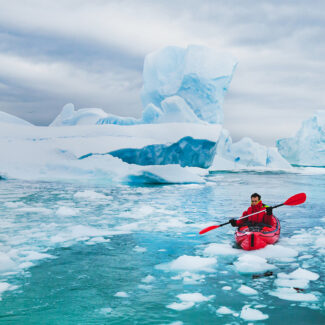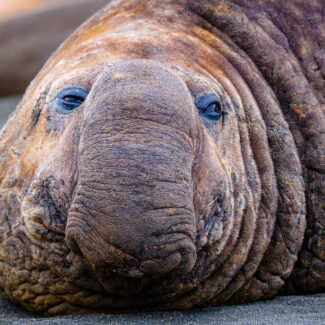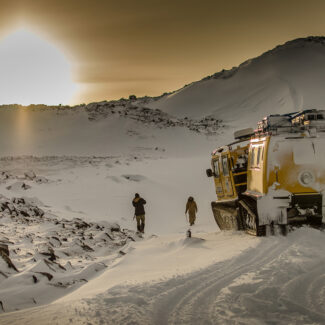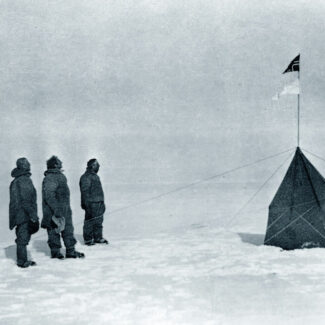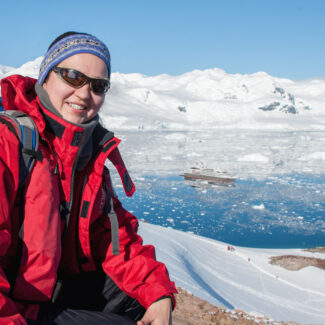Antarctic Plants: Pearlwort, Hair Grass & Palm Trees?
While you could be forgiven for thinking of the White Continent as nothing but a barren, ice-locked wilderness, there is in fact plantlife down here: albeit plantlife of quite low diversity and restricted distribution, but the plants in Antarctica and tough-as-nails character!
The Challenges For The Plants of Antarctica
Antarctica presents a harsh and forbidding environment for most kinds of plants. Less than one percent of the White Continent is ice-free, which needless to say restricts growing space for vegetation and makes for exceedingly scarce rooting real estate. Not only that, but its extreme climate of cripplingly cold temperatures, fierce winds, and notable aridity—not to mention the months of mid-winter darkness when photosynthesis can’t effectively occur—only makes for lean, low-nutrient soils in what little space is available.
So how much vegetation is there in Antarctica?
According to a new study in Nature which has generated the first ever map of vegetation below 60° S, only 44.2 sq. km is covered with vegetation—half of which is contained in the South Shetland Islands alone—equating to just 0.12% of Antarctica’s ice-free area.
Are There Any Trees in Antarctica?
There are no trees in Antarctica, nor shrubs for that matter. Limited productivity, harsh temperatures, and desiccating winds mean that those few plants that exist here can only grow in stunted, ground-hugging form. That includes the only two flowering plants of any kind found on the continent, both restricted to the mildest region: the coastal margin of the Antarctic Peninsula. More widespread are mosses and liverworts, which are more primitive, non-vascular plants. Lichens—which aren’t plants, but symbiotic communities of algae and fungi—are found even more widely.
Prehistoric Antarctic Plants
But Antarctica hasn’t always been locked away by ice at the bottom of the world—or treeless. As part of ancient supercontinents, including Pangaea and Gondwana, Antarctica experienced much warmer, more humid conditions, both because of shifts in its geographic position—the White Continent has sat on the equator in ages past—and because of shifts in global climate.
Palm Trees in Antarctica
For example, some 53 million years ago in the early Eocene, when atmospheric carbon dioxide levels were much higher (on the order of 600 parts per million) and global temperatures several degrees warmer, Antarctica, though not far from its present location, enjoyed near-tropical conditions. Drilling off the coast of Wilkes Land has turned up pollen grains from this period of Antarctica palm trees—yes, that’s right, palms—as well as trees related to today’s tropical and subtropical baobab and macadamia.
Plant Fossils Found in Antarctica
Thanks to faunal fossils we now know that in Mesozoic times, luxuriant forests of conifers, southern beeches, and ferns grew in Antarctica. The southern beeches, which belong to the genus Nothofagus, may even have originally evolved on the Antarctic Peninsula during the Late Cretaceous.
Temperate-style forests of southern beech and other Gondawan species similar to modern-day forests in South America and Australia likely began receding in Antarctica as glaciation intensified and its ice sheets began forming. But there’s some evidence that Nothofagus may have lasted in parts of the White Continent until only a few million years ago!
Once Antarctica was fully separated from other Gondwanan landmasses and the Antarctic Convergence and West Wind Drift in the Southern Ocean helped isolate its increasingly iced-over polar realm, most higher plants died out. To learn more about Antarctica’s ancient bygone plants—including the famous Glossopteris—see our dedicated guide to its fossil record and prehistory.
What Plants Live in Antarctica Today?
True plants in Antarctica include two species of vascular flowering plants and many more kinds of non-vascular bryophytes (mosses and liverworts).
Vascular plants transport liquids and nutrients via specialized tubelike cells, xylem and phloem, which also permit firm and elongated growth. Non-vascular plants such as mosses lack this vascular tissue, and instead have simpler cell-to-cell mechanisms for shuttling water internally (and can’t grow so tall and rigid as their vascular counterparts).
Below, we’ll profile some of the (scarce) vascular and (much-more-abundant) non-vascular plants of Antarctica, spotlighting critical adaptations they’ve evolved to get by in this demanding (to say the least) environment as we go along.
Antarctic Mosses & Liverworts
Some 100 species of mosses have been identified in Antarctica, and on the order of 25 or 30 species of liverworts (also called hepatics). These non-vascular plants are collectively called bryophytes, and in Antarctica are most common in coastal maritime regions such as the Antarctic Peninsula.
Without vascular bundles, they remain small and are most common where water is plentiful. Given most of Antarctica is a polar desert, most of its moisture comes from melting ice or snow, so Antarctic mosses often form “lawns” along meltwater channels from glaciers and ponds. However, one species, Ceratodon purpureus, has even been found as far south as 83°48’S on Mount Kyffin in the Commonwealth Range of southern Victoria Land.
Mosses at the bottom of the world have also had to adapt to endure extended stretches of desiccation, rehydrating—and essentially coming back to life—when water becomes available. They’ve evolved to withstand the extreme cold by absorbing loads of sunlight—aka “sunbaking”—during the continent’s near 24 hours of summer sun, while simultaneously relying on UV-resistant chemicals (natural sunscreens, essentially) to avoid irreparable radiation damage.
Scientists are particularly fond of Antarctic mosses because they neatly accumulate the carbon they absorb from the atmosphere in layers. When combined with their extremely slow growth rates—historically one millimeter or less a year, on average (although growth rates have shot up in recent years)—they provide an easy and accurate means of radiocarbon dating and a near-unparalleled insight into climate change in Antarctica.
Flowering Plants in Antarctica
A mere two flowering plants can be found on the White Continent: Antarctic hair grass (Deschampsia antarctica) and Antarctic pearlwort (Colobanthus quitensis). Both show resilience to cold and drought, and can photosynthesize at freezing temperatures. They flower in the brief summer, then slip into dormancy, picking up with seed production and germination the following year.
On the White Continent proper, both hair grass and pearlwort are restricted to the Antarctic Peninsula, but they’ve shown significant expansion of their range here in recent decades. Scientists attribute that spread to the Peninsula’s warming temperatures. Such warming not only lengthens the growing season, but also makes critical nutrients—not least nitrogen—which were previously bound up in soil (due to very slow weathering under cold conditions) more readily available, thereby increasing growth rates too.
Antarctic Hair Grass
The Antarctic hair grass is the southernmost species of its very widespread hair-grass genus. This short, clumping grass is found on the Antarctic Peninsula as well as the South Shetland and South Orkney islands: basically the maritime Antarctic, climatically speaking.
Quite commonly seen amid the hustle and bustle of penguin colonies on the Peninsula, Antarctic hair grass is primarily wind-pollinated: a necessity given the dearth of pollinating insects or other organisms. It can also self-pollinate, though—another important survival mechanism in such a rigorous corner of the globe—and also spreads vegetatively, likely enhanced by seabirds inadvertently propagating it when plucking hair grass for nesting material.
Antarctic Pearlwort
Antarctic pearlwort (Colobanthus quitensis) is a cushion plant characterized by pretty yellow flowers. Like Antarctic hair grass, it’s found in maritime Antarctic climates on the Peninsula as well as the South Shetlands and South Orkneys, but its range also extends to the South American continent, where it’s found well north in the southern Andes.
Like hair grass, Antarctic pearlwort is both wind- and self-pollinated. Studies suggest bacterial and fungal communities associated with pearlwort roots and tissues may aid the plant in tolerating very low temperatures.
Sub-Antarctic Plants
The milder and wetter maritime climate of sub-Antarctic islands fosters substantially richer plantlife than the Antarctic zone. While there aren’t any native woody species, there are many more flowering herbs and grasses as well as ferns. South Georgia, for example, supports at least 25 species of higher plants, including multiple grasses, rushes, and ferns.
The signature plant of the sub-Antarctic islands is tussock grass, which forms dense, tall swards. Numerous sub-Antarctic islands are also carpeted in places by meadows of the large, taxonomically diverse forbs called “megaherbs.”
The more moderate conditions of the sub-Antarctic islands have also allowed non-native plants to gain a foothold on some, spread by human activity. South Georgia has more than a dozen such exotic plants, many introduced during that island’s whaling and sealing days.
Plantlike Organisms: Algae, Lichens, and Fungi in Antarctica
Algae, which include an incredibly diverse group of both single-celled and multi-celled organisms, share with true plants the ability to produce their own energy through photosynthesis. About 700 species have been recorded in the Antarctic, taking many forms and occupying many habitats: from marine settings (where, for example, kelp and diatoms are found) to the algal communities of Antarctica’s lakes, soils, and snow. Algae here even exist within the pores of bedrock such as sandstone.
Antarctic algae help form the foundation of the ecosystem: especially marine algae, which include the phytoplankton driving the Southern Ocean food web.
The most widespread visible life form on Antarctica’s terra firma are lichens, perhaps 300 to 400 species of which are found here. Lichens are composite organisms made up of algae (or, in some cases, “blue-green algae” or cyanobacteria) and fungi. The lichen’s fungal component provides structure and secures nutrients, while the algae supply energy via photosynthesis.
Lichens, which may take the form of surface crusts or leafy or branchlike growths, are incredibly hardy, well adapted to the rigors of Antarctica. They can survive long periods of drought, cold, and other stressors in dormancy, and quickly whip into photosynthetic action when conditions improve. They’re extremely slow-growing, with lichens in the harsh McMurdo Dry Valleys of Antarctica adding perhaps a centimeter every thousand years.
While the most diverse lineup of lichens on the White Continent is found on the Antarctic Peninsula, some species grow as far south as 86°30’.
Disclaimer
Our travel guides are for informational purposes only. While we aim to provide accurate and up-to-date information, Antarctica Cruises makes no representations as to the accuracy or completeness of any information in our guides or found by following any link on this site.
Antarctica Cruises cannot and will not accept responsibility for any omissions or inaccuracies, or for any consequences arising therefrom, including any losses, injuries, or damages resulting from the display or use of this information.
